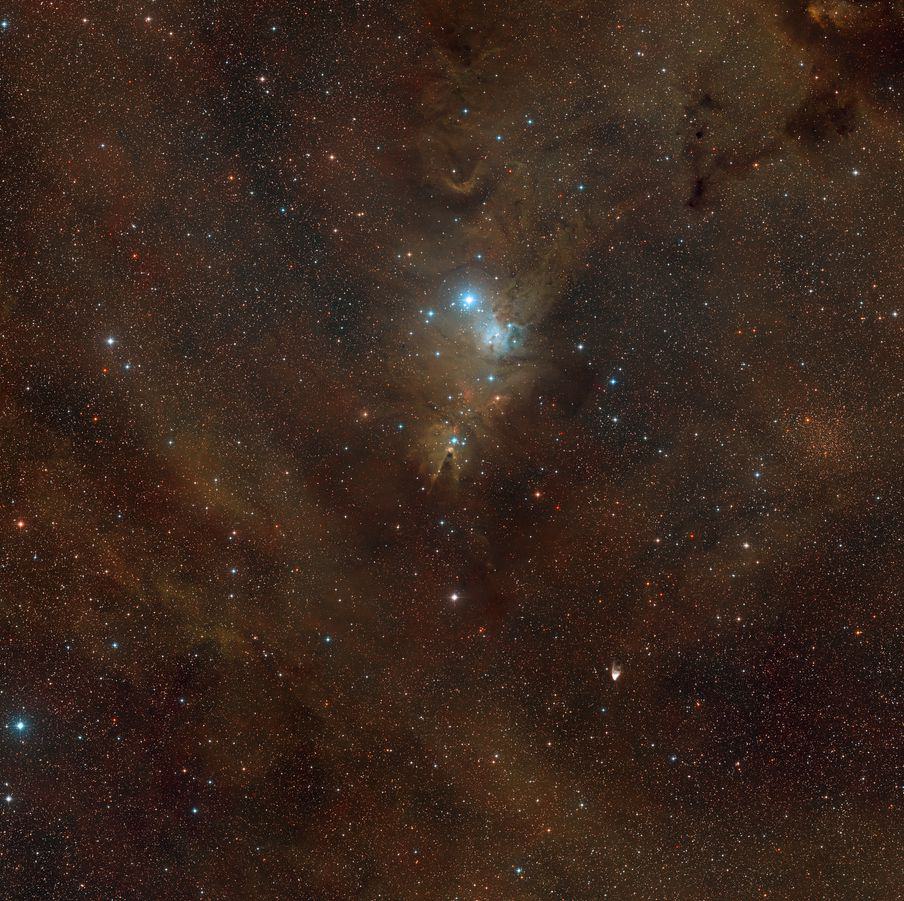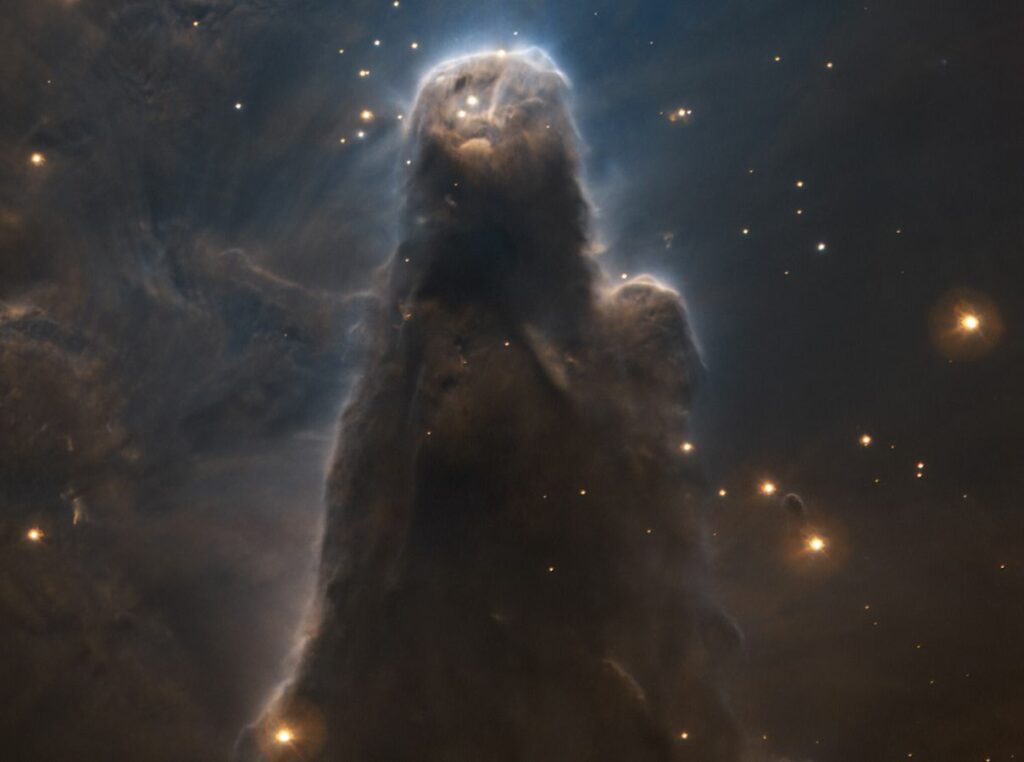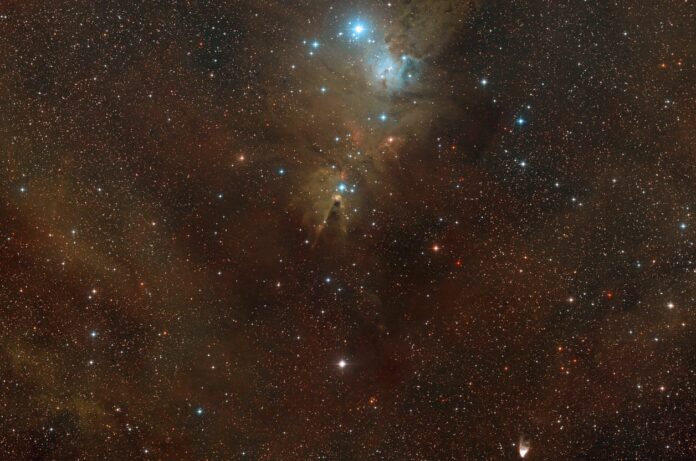This stunning new image of the Cone Nebula was taken earlier this year with one of ESO’s telescopes and was chosen for release in honour of ESO’s 60th anniversary.
In the middle of this new picture is the seven-light-year-long pillar of the Cone Nebula. This is part of the larger star-forming region NGC 2264, which was found by astronomer William Herschel in the late 18th century. This horn-shaped nebula is seen in the sky in the constellation Monoceros (The Unicorn).
The Cone Nebula is less than 2500 light-years away from Earth, which makes it an easy object to study. This view, however, is more dramatic than any that have been gotten previously since it highlights the nebula’s murky, dark, foggy aspect in a way that makes it like a “mythological creature”.

The Cone Nebula is a great example of the pillar-like shapes that form in giant clouds of cold molecular gas and dust, which are known for making new stars.
This kind of pillar forms when huge, freshly born brilliant blue stars emit powerful ultraviolet radiation and stellar winds that sweep material away from their surroundings.
As this material is pushed away, the gas and dust farther from the young stars get pushed together and form shapes like tall, dark pillars.
In NGC 2264, the black Cone Nebula, which points away from the dazzling stars, is a result of this phenomenon.

This picture was taken with ESO’s VLT in Chile and the FOcal Reducer and low dispersion Spectrograph 2 (FORS2). Hydrogen gas is shown in blue, and sulphur gas is shown in red.
By using these filters, the otherwise bright blue stars that signify recently formed stars appear nearly golden in contrast to the dark, sparkler-like stars.
This image is only one of the many amazing and breathtaking discoveries produced by ESO telescopes over the past 60 years.
While this particular image was taken for educational purposes, the vast majority of ESO’s telescope time is devoted to scientific investigations that have allowed us to take the first image of an exoplanet, investigate the black hole at the centre of our home galaxy, and discover evidence that the expansion of our Universe is accelerating.
Image/video credit: ESO
